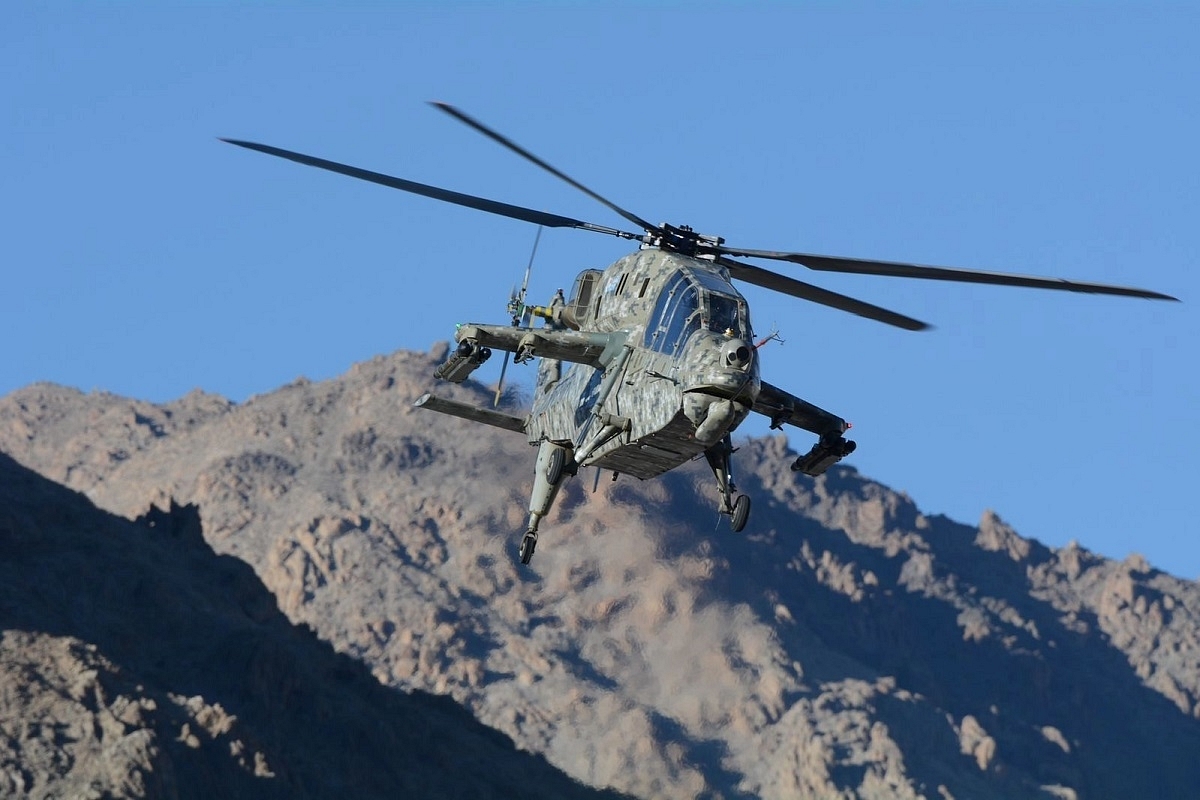Defence
Nine Out Of 15 Sanctioned Indigenous Light Combat Helicopters Manufactured; Army Looking At Acquiring 95: Report
- Indian Army raised the first squadron of the LCH at Bengaluru on 1 June this year. It plans to have seven units of LCH, each with ten helicopters.

A light combat helicopter.
At least nine of the 15 indigenous Light Combat Helicopters have been manufactured by Hindustan Aeronautics Limited (HAL) and are being handed over to the Indian Air Force (IAF) and Army, The Hindu reports.
The Cabinet Committee on Security, the highest decision-making body on national security affairs, approved the purchase of 15 LCHs for the Indian Army and the IAF in March this year. Ten of these helos will be operated by the IAF and the remaining five by the Indian Army.
The Indian Army is looking at acquiring 95 LCHs, the report adds.
The Indian Army quietly raised the first squadron of the LCH at Bengaluru on 1 June this year. According to a news report, the squadron will be moved to the Eastern Command, which is responsible for India's borders in the east, including the frontier with Tibet in Sikkim and Arunachal Pradesh.
The report adds that the Indian Army plans to have seven units of LCH, each with ten helicopters. These units will be raised for deployment in the mountainous areas, including India's frontiers in the Himalayas.
LCH, designed and built by HAL, is India's first indigenously-built dedicated attack helicopter.
The helicopter has been built to meet the requirements of the Indian military in high-altitude areas in Kashmir, Ladakh and Arunachal. It has demonstrated its capability of operating in high-altitude conditions during trials not only in Ladakh but also on the Siachen Glacier, often referred to as the 'world's highest battlefield'.
Two LCHs were deployed in Ladakh in August 2020 amid the standoff with China along the Line of Actual Control.
Equipped with HAL's new-generation Shakti engine, co-developed with French engine-maker Safran, the 5.5-tonne helo has been designed to operate at an altitude of up to 20,000 feet.
"During the Kargil War of 1999, there was a need felt for armed attack helicopters capable of operating at high altitude. That's where the LCH fits in," former Indian Air Force chief Fali Homi Major, the only helicopter pilot to become Chief of Air Staff, wrote recently.
The combat helicopter comes armed with a cannon mounted below its nose, capable of piercing light armour with a thousand 20-millimetre bullets each minute. It carries 70-millimetre rockets on pods on either side. The helo can also be armed with an air-to-air missile and an anti-armour missile.
MBDA's Mistral air-to-air missile has been test-fired from the LCH, and the HAL has procured and integrated Mistral-specific launchers on the platform.
Prime Minister Narendra Modi officially handed over the helicopter to the IAF in Uttar Pradesh's Jhansi on 19 November last year.
More US-built Apache helicopters
The Army is also interested in buying 11 more Boeing Apache AH-64E attack helicopters from the US.
The helos, also called tank killers, are already in service with the IAF. The Army, too, is set to receive six of these helicopters. An additionl 11 Ah-64Es will take the number of Apache helciopetrs for the Army to 17.
Given a major turf war between the IAF and the Army over who would control these assets led to the division of the helos between the two services. While the Air Force has already received all the 22 Apaches it had contracted for, the Army is yet to receive its first units.
Apache helicopters come armed with Hellfire precision-strike missiles and air-to-air Stinger missiles. Of the IAF's 22 Apaches, 11 are equipped with the Longbow fire control radar system. Along with the Longbow radars, these missiles can wreak havoc on enemy armour. It is not for nothing that the Apaches are often referred to as "tank killers."
Apache's chin-mounted gun can send 625 armour-penetrating bullets per minute ripping into the targets. It is equipped with the Hellfire missile, designed as a heavy tank killer to destroy Soviet armour on the battlefields of Western Europe.
Introducing ElectionsHQ + 50 Ground Reports Project
The 2024 elections might seem easy to guess, but there are some important questions that shouldn't be missed.
Do freebies still sway voters? Do people prioritise infrastructure when voting? How will Punjab vote?
The answers to these questions provide great insights into where we, as a country, are headed in the years to come.
Swarajya is starting a project with an aim to do 50 solid ground stories and a smart commentary service on WhatsApp, a one-of-a-kind. We'd love your support during this election season.
Click below to contribute.
Latest